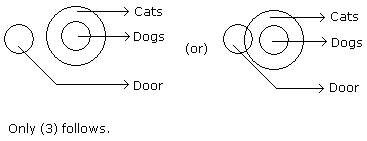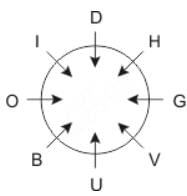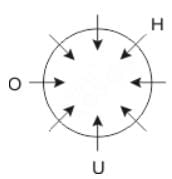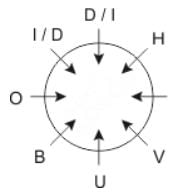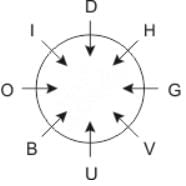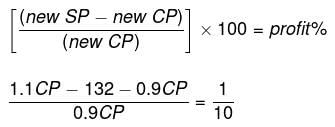DSSSB TGT Natural Science Mock Test - 8 - DSSSB TGT/PGT/PRT MCQ
30 Questions MCQ Test - DSSSB TGT Natural Science Mock Test - 8
During the Indian Freedom Struggle, why did Rowlatt Act arouse popular indignation?
Diamond is harder than graphite because of –
In the history of Indian population, which duration period is referred to as 'A great leap forward'?
In which state of India is there a uniform civil code?
The site of birth [nativityl of Gautam Buddha is marked by oy:
With reference to 'Equalisation Levy 2.0', which of the following statements is/are correct?
1. It covers online sales of all goods and services.
2. It is applied to only non-resident companies.
3. India is the only G20 nation to have implemented such a tax.
Select the correct answer using the code given below.
Consider the following:
1. SAARC
2. ASEAN
3. G 20
4. BRICS
India entered into a complete open sky agreement with which of the given above regional groups?
In which city in Madhya Pradesh did Asia's first floating festival start?
Which state launched the "Mero Rukh Mero Santati" 'New Green Initiative'?
Directions to Solve
In each of the following questions, five words have been given out of which four are alike in some manner, while the fifth one is different. Choose the word which is different from the rest.
Question -
Choose the word which is different from the rest.
Directions to Solve
In each of the following questions two statements are given. Which are followed by four conclusions (1), (2), (3) and (4). Choose the conclusions which logically follow from the given statements.
Question -
Statements: No door is dog. All the dogs are cats.
Conclusions:
- No door is cat.
- No cat is door.
- Some cats are dogs.
- All the cats are dogs.
Pointing towards a man, a woman said, "His mother is the only daughter of my mother." How is the woman related to the man?
Directions to Solve
Five girls are sitting on a bench to be photographed. Seema is to the left of Rani and to the right of Bindu. Mary is to the right of Rani. Reeta is between Rani and Mary.
Question - Who is sitting immediate right to Reeta?
Find the one which does not belong to that group ?
Directions: Study the following information carefully and answer the question given below.
Eight people O, H, U, V, I, D, B and G are sitting around a circular table facing the centre.
O is sitting second to the left of U and third to right of H. D and I are immediate neighbors of each other and one of them is an immediate neighbor of O. V is sitting second to the right of B. G is sitting second to the left of D.
Q. Which of the following pairs has only one person sitting between them, if the counting is done from the right of latter?
The following line graph gives the ratio of the amounts of imports by a company to the amount of exports from that company over the period from 1995 to 2001.
What was the percentage increase in imports from 1997 to 1998 ?
The following line graph gives the percent profit earned by two Companies X and Y during the period 1996 - 2001.

Percentage profit earned by Two Companies X and Y over the Given Years
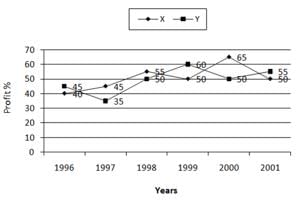
Q.
The incomes of two Companies X and Y in 2000 were in the ratio of 3:4 respectively. What was the respective ratio of their expenditures in 2000?
A sum of money doubles itself in 5 years. In how many years will it become four fold (if interest is compounded)?
Riya, Anil and Rishi start running around a circular stadium and complete one round in 15s, 12s and 21s respectively. In how much time will they meet again at the starting point?
60 percent of the employees of a company are women and 75% of the women earn 20000 or more in a month. Total number of employees who earns more than 20000 per month in the company is 60 percent of the total employees.What fraction of men earns less than 20000 per month?
In a library, 30% of the books are in History. 50% of the remaining are in English and 40% of the remaining are in German. The remaining 4200 books are in regional languages. What is the total number of books in library?
X Can finish a piece of work in 12 days while Y can do it in 15 days. If both work at it together. How much time will they take to do the work?
Find the average of five consecutive even numbers a, b, c, d and e.
The cost of a diamond varies directly as the square of its weight. Once, this diamond broke into four pieces with weights in the ratio 1 : 2 : 3 : 4. When the pieces were sold, the merchant got Rs. 70,000 less. Find the original price of the diamond.
A sum of Rs. 735 was divided among A, B and C. If each of them had received Rs. 25 less, then their shares would have been in the ratio 1 : 3 : 2. What is the money received by C?
A man purchased 10 pens and got 2 pens free. He marked the price 20% more than the CP. He did not allow any discount and sold all the 12 pens for this price. Find his profit percentage.
A man sells an article at a gain of 10%. If he had bought it at 10% less and sold it for Rs. 132 less, he would have still gained 10%. The cost price of the article is



